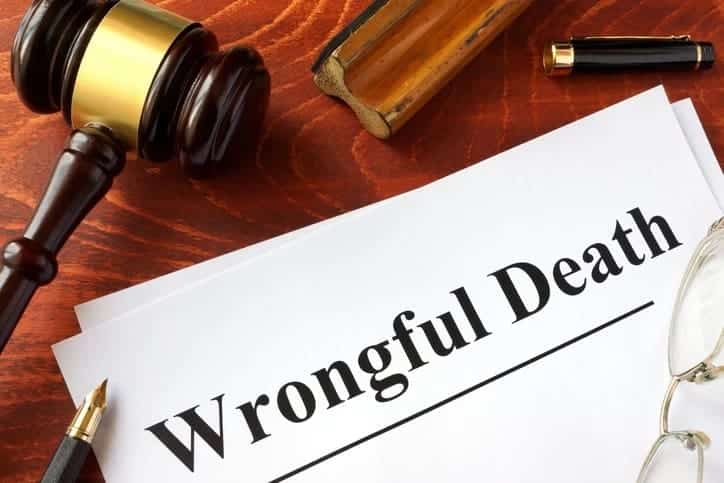Grief associated with losing a family member or friend is among the most difficult experiences in life. It is particularly hard when the death is sudden, as can happen in a road crash or medical emergency. After a wrongful death, it is normal also to feel shocked, disbelief, and devastation. It can be difficult to find time to grieve while also facing life’s continuous demands.
There may be questions and unresolved issues related to the fatality. At Coluccio Law, we can assist in the search for answers and meaning for an untimely death. We can also explain related legal proceedings and your rights under the law.
When your family member or friend’s death is a result of another person or entity’s misconduct or negligence, a wrongful death lawsuit claim may be established. Examples of circumstances giving rise to wrongful death claims include motor vehicle crashes, commercial truck crashes, workplace accidents, medical malpractice, and manufacturing defects. While states have differing wrongful death laws, rules, and procedures, there are several coinciding elements that are needed to bring a wrongful death lawsuit. A person who brings a claim needs to establish certain facts and proof to win the case. Here is what you need to know about the essential components of wrongful death lawsuits.

What Must Be Proved in a Wrongful Death Lawsuit in Washington State?
Fatality
The starting point in a wrongful death case is the death of an individual. A plaintiff is typically a surviving family member or a designated individual bringing a claim against the responsible party on behalf of the decedent’s estate and beneficiaries.
Duty of Care
Under the law, the offending party, called the defendant, had an obligation to act in a reasonable and responsible manner towards the deceased individual and did not. For example, a truck driver owes a duty of care to other motorists on the highway to drive the speed limit and control the commercial vehicle. If the truck driver does not properly control the commercial vehicle, the truck driver is not fulfilling their duty of care. This is commonly called a breach of the standard of care.
Negligence or Breach of Duty of Care
When the defendant fails to act with reasonable and responsible care or when the defendant intentionally causes injury, they have violated the duty of care or acted negligently. For example, a truck driver has breached the duty of care by speeding and failing to control the commercial vehicle, in turn causing a crash that results in a fatality.
In response to a claim, the defendant may use one of these defenses: contributory negligence, failure to establish causation, or the failure to establish a breach of the required standard of care. In Washington State, the law recognizes contributory fault, also called comparative fault, in wrongful death cases. Contributory negligence applies when an injury or death occurs for which both the plaintiff and the defendant share fault. When a fault is shared, the amount of compensation that the plaintiff can collect is often reduced. Under this defense, the plaintiff and defendant are each assigned a percentage of total responsibility for the negligence that led to the death. Even if the truck driver was only 15% liable for causing the crash, the plaintiff could recover damages. The defense of failure to establish causation simply means that although, for example, the truck driver was speeding, his speeding did not cause or contribute to the accident and the fatality. Lastly, failure to establish the breach of the standard of care means that the truck driver, for example, operated the commercial truck within the required standard care-of-operation.
Causation
As noted above, the claimant must prove that the decedent’s death was the result of a breach of duty or negligent act by the defendant. Causation requires drawing a direct, undisputable connection between the defendant’s negligence and the cause of death. This is done using factual evidence and legal arguments. For example, the plaintiff must establish that the crash caused by the truck driver’s speed was the reason for the fatality.
Damages
The significant losses experienced by the victim’s family because of their loved one’s death establish the basis of damages. These damages include: general and special. General and special damages are compensatory damages. They cover economic loss, including costs for medical bills, funeral expenses, property damage, future home services, or future lost wages and benefits. They can also include pre-death pain and suffering or loss of consortium. Surviving beneficiaries may be entitled to the loss of love, affection, companionship, training, and support. This is only a general overview of the potential damages for a wrongful death case, and you should always consult with an experienced wrongful death attorney to discuss the damages allowed in your bring case.
Statutory Law
It is important to note that wrongful death cases are based upon statutory laws enacted in the State of Washington. Over the past several years, the laws are expanded to include claims for the death of adult single children. In addition, statutory laws allow the parents to pursue independent claims for the losses suffered by the death of a minor child.
Bringing a Wrongful Death Claim
In order to bring a wrongful death claim, an estate must be opened and a Personal Representative appointed. This is different than an individual bringing a personal injury claim. The Personal Representative pursues the wrongful death lawsuit on behalf of the statutory beneficiaries.
Experienced Wrongful Death Counsel
If you have suffered the loss of a loved one because of the wrongful act or negligence of another, contact and discuss a potential claim with an experienced wrongful death attorney. Coluccio Law provides free consultations. Schedule an appointment and learn more about your possible next steps.





